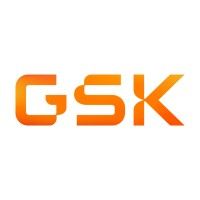预约演示
更新于:2025-03-29
GSK837149A
更新于:2025-03-29
概要
基本信息
在研机构- |
最高研发阶段无进展临床前 |
首次获批日期- |
最高研发阶段(中国)- |
特殊审评- |
结构/序列
分子式C23H22N8O5S2 |
InChIKeyRSINKZJTTORDAJ-UHFFFAOYSA-N |
CAS号13616-29-0 |
关联
100 项与 GSK837149A 相关的临床结果
登录后查看更多信息
100 项与 GSK837149A 相关的转化医学
登录后查看更多信息
100 项与 GSK837149A 相关的专利(医药)
登录后查看更多信息
4
项与 GSK837149A 相关的文献(医药)2020-06-01·European journal of pharmaceutical sciences : official journal of the European Federation for Pharmaceutical Sciences2区 · 医学
Evaluation of FASN inhibitors by a versatile toolkit reveals differences in pharmacology between human and rodent FASN preparations and in antiproliferative efficacy in vitro vs. in situ in human cancer cells
2区 · 医学
Article
作者: Mäklin, Kiira ; Laitinen, Jarmo T ; Savinainen, Juha R ; Laitinen, Tuomo ; Tonduru, Arun K ; Poso, Antti ; Patil, Mahadeo R ; Vihavainen, Taina ; Singha, Prosanta K ; Nevalainen, Tapio J
De novo synthesis of fatty acids is essential to maintain intensive proliferation of cancer cells. Unlike normal cells that utilize food-derived circulating lipids for their fuel, cancer cells rely on heightened lipogenesis irrespective of exogenous lipid availability. Overexpression and activity of the multidomain enzyme fatty acid synthase (FASN) is crucial in supplying palmitate for protumorigenic activity. Therefore, FASN has been proposed as an attractive target for drug development. As an effort to set up an effective toolkit to study FASN inhibitors in human and rodent tissues, we validated activity-based protein profiling (ABPP) as a viable approach to unveil inhibitors targeting FASN thioesterase domain (FASN-TE). ABPP was combined with multi-well plate-assays designed for classical substrate-based FASN activity analysis together with powerful monitoring of cancer cell proliferation using IncuCyte® Live Cell Analyzing System. FASN-TE inhibitors were identified by competitive ABPP using HEK293 cell lysates in a screen of in-house compounds (200+) designed to target serine hydrolase (SH) family. The identified compounds were tested for their inhibitor potencies in vitro using a substrate-based activity assay monitoring FASN-dependent NADPH consumption in LNCaP prostate cancer cell preparation, in parallel with selected reference inhibitors, including orlistat (THL), GSK2194069, GSK837149A, platensimycin and BI-99179. LNCaP lysate supernatant was validated as a reliable native preparation to monitor FASN-dependent NADPH consumption as opposed to human glioma GAMG cells, whereas FASN enrichment was a prerequisite for accurate assays. While inhibitor pharmacology was identical between human prostate and glioma cancer cell FASN preparations, notable differences were revealed between human and rodent FASN preparations, especially for inhibitors targeting FASN-TE. ABPP combined with substrate-based assays facilitated identification of pan thiol-reactive inhibitor scaffolds, exemplified by the 1,2,4-thiadiazole moiety. Finally, selected compounds were evaluated for their antiproliferative efficacy in situ using GAMG cells. These studies revealed that while the tested compounds acted as potent FASN inhibitors in vitro, only a few showed antiproliferative efficacy in situ. To conclude, we describe a versatile toolkit to study FASN inhibitors in vitro and in situ using human cancer cells and reveal dramatic pharmacological differences between human and rodent FASN preparations.
2019-09-01·Cell chemical biology1区 · 生物学
Mechanistic MALDI-TOF Cell-Based Assay for the Discovery of Potent and Specific Fatty Acid Synthase Inhibitors
1区 · 生物学
Article
作者: Krueger, Julie A ; Weigt, David ; Oleykowski, Catherine A ; Parrish, Cynthia A ; Rendina, Alan R ; Hopf, Carsten
Human cancers require fatty acid synthase (FASN)-dependent de novo long-chain fatty acid synthesis for proliferation. FASN is therefore an attractive drug target, but fast technologies for reliable label-free cellular compound profiling are lacking. Recently, MALDI-mass spectrometry (MALDI-MS) has emerged as an effective technology for discovery of recombinant protein target inhibitors. Here we present an automated, mechanistic MALDI-MS cell assay, which monitors accumulation of the FASN substrate, malonyl-coenzyme A (CoA), in whole cells with limited sample preparation. Profiling of inhibitors, including unpublished compounds, identified compound 1 as the most potent FASN inhibitor (1 nM in A549 cells) discovered to date. Moreover, cellular MALDI-MS assays enable parallel profiling of additional pathway metabolites. Surprisingly, several compounds triggered cytidine 5'-diphosphocholine (CDP-choline) but not malonyl-CoA accumulation indicating that they inhibit diacylglycerol generation but not FASN activity. Taken together, our study suggests that MALDI-MS cell assays may become important tools in drug profiling that provide additional mechanistic insights concerning compound action on metabolic pathways.
2008-04-01·The FEBS journal3区 · 生物学
Discovery of GSK837149A, an inhibitor of human fatty acid synthase targeting the β‐ketoacyl reductase reaction
3区 · 生物学
Article
作者: Read, Martin ; Liu, Ronggang ; Leavens, William ; Rodríguez, Beatriz ; Domínguez, Juan Manuel ; Vázquez, María Jesús ; Richards, Stephen ; Winegar, Deborah
GSK837149A has been identified as a selective inhibitor of human fatty acid synthase (FAS). The compound was first isolated as a minor impurity in a sample found to be active against the enzyme in a high‐throughput screening campaign. The structure of this compound was confirmed by NMR and MS studies, and evaluation of the newly synthesized molecule confirmed its activity against FAS. The compound and other analogs synthesized, all being symmetrical structures containing a bisulfonamide urea, act by inhibiting the β‐ketoacyl reductase activity of the enzyme. GSK837149A inhibits FAS in a reversible mode, with a Ki value of ∼ 30 nm, and it possibly binds to the enzyme–ketoacyl‐ACP complex. Although initial results suggest that cell penetration for these compounds is impaired, they still can be regarded as useful tools with which to probe and explore the β‐ketoacyl reductase active site in FAS, helping in the design of new inhibitors.
100 项与 GSK837149A 相关的药物交易
登录后查看更多信息
研发状态
10 条进展最快的记录, 后查看更多信息
登录
| 适应症 | 最高研发状态 | 国家/地区 | 公司 | 日期 |
|---|---|---|---|---|
| 肿瘤 | 临床前 | 西班牙 | 2008-02-25 | |
| 肿瘤 | 临床前 | - | 2008-02-25 |
登录后查看更多信息
临床结果
临床结果
适应症
分期
评价
查看全部结果
| 研究 | 分期 | 人群特征 | 评价人数 | 分组 | 结果 | 评价 | 发布日期 |
|---|
No Data | |||||||
登录后查看更多信息
转化医学
使用我们的转化医学数据加速您的研究。
登录
或

药物交易
使用我们的药物交易数据加速您的研究。
登录
或

核心专利
使用我们的核心专利数据促进您的研究。
登录
或

临床分析
紧跟全球注册中心的最新临床试验。
登录
或

批准
利用最新的监管批准信息加速您的研究。
登录
或

特殊审评
只需点击几下即可了解关键药物信息。
登录
或

来和芽仔聊天吧
立即开始免费试用!
智慧芽新药情报库是智慧芽专为生命科学人士构建的基于AI的创新药情报平台,助您全方位提升您的研发与决策效率。
立即开始数据试用!
智慧芽新药库数据也通过智慧芽数据服务平台,以API或者数据包形式对外开放,助您更加充分利用智慧芽新药情报信息。
生物序列数据库
生物药研发创新
免费使用
化学结构数据库
小分子化药研发创新
免费使用
